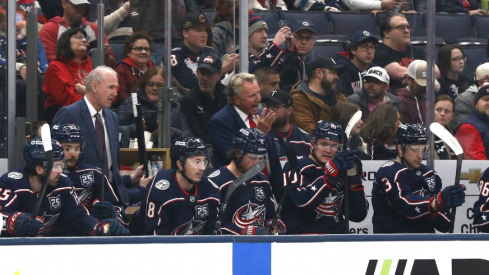It wouldn't be cheap.
Acquiring Mitch Marner from the Toronto Maple Leafs this summer with an offer sheet is possible, though.
In the 2018-19 season, the 22-year-old Canadian notched 26 goals and 68 assists for a total of 94 points. He played all 82 games in the regular season. In the playoffs, he added four points in the Maple Leafs' seven-game series loss to the Boston Bruins.
Marner will be a restricted free agent (RFA) this summer, which means that he's now completed his entry-level contract but does not have enough NHL service time to become an unrestricted free agent.
For a quick primer on RFAs: teams wishing to keep an RFA will issue a qualifying offer to the player. Even if the player declines the offer, their status as an RFA is maintained. If a team does not issue the RFA a qualifying offer, the player becomes an unrestricted free agent (UFA) and he is free to sign with any NHL team.
If the RFA cannot reach an agreement with their team by Dec. 1, they become ineligible to play for the remainder of that season. In 2017, then-RFA Blue Jackets forward Josh Anderson was without a contract for the entire summer and didn't reach an agreement with the club until Oct. 2, just before the start of the season.
So, how would the Blue Jackets be able to acquire Marner, an RFA who is bound to have boatloads of interest from many clubs?
The answer is an offer sheet. It's a contract negotiated between a team and RFA on another team. If an RFA chooses to sign an offer sheet with another team, their current team is notified and has the option to match the offer sheet. This means that the player's current club offers him an identical contract which he is obligated to sign, due to his RFA status. Alternatively, his team can choose to let him walk if they don't want to match the terms. The RFA's current team has seven days to decide after an offer sheet is signed.
It's important to note that the last accepted offer sheet in the NHL occurred in 2007. The Edmonton Oilers submitted an offer sheet for Dustin Penner, and the Anaheim Ducks accepted. It's not incredibly common for players to sign offer sheets, and even less common for teams to accept offer sheets, but it's happened many times previously.
It's not as easy as signing Marner away from the Maple Leafs, however. Any team that loses an RFA must receive compensation from the team signing the RFA. The compensation is based on a sliding scale that changes every year, based on how much the contract is worth. Per CapFriendly, here is the compensation scale for the 2019 offseason:
| Annual Average Value (AAV) | Compensation |
|---|---|
| $0 - $1,395,053 | No Compensation |
| $1,395,054 - $2,113,716 | 1 Third-Round Pick |
| $2,113,717 - $4,227,437 | 1 Second-Round Pick |
| $4,227,438 - $6,341,152 |
1 First-Round Pick 1 Third Round Pick |
| $6,341,153 - $8,454,871 |
1 First-Round Pick 1 Second-Round Pick 1 Third-Round Pick |
| $8,454,872 - $10,568,589 |
2 First-Round Picks 1 Second-Round Pick 1 Third-Round Pick |
| $10,568,590 - ∞ | 4 First-Round Picks |
Reports around the league suggest that Marner is looking for a contract with an AAV of $11 million or higher, which would put him in the most expensive category. To sign Marner, it'd cost a team his contract plus four first-round draft picks — quite the price.
With Artemi Panarin and Sergei Bobrovsky most likely on their way out of Columbus, cap space wouldn't be an issue for the Blue Jackets, as they'll have plenty of it.
There are a few extra restrictions for compensation that are important to take heed of if the Blue Jackets do extend an offer sheet:
- The draft picks (four first-rounders, in this case) must be a team's own, original draft picks
- A team can trade to get their draft picks back if they traded them away previously
- All draft picks must be for the next draft except for multiple first-round picks.
- Teams get an extra year when giving up multiple first-round picks
The third caveat is very important for the Blue Jackets, who will send their first-round pick in 2020 to Ottawa if they can re-sign Matt Duchene. This wouldn't prohibit them from extending an offer sheet to Marner, thanks to the exception that teams giving up multiple first-round picks get an extra year to draft.
Marner is one of the best young players in the NHL, and a bonafide star at the age of 22. He'd be a great pickup for any franchise lucky enough to sign him, but it'll be tough to pry him away from Toronto.
If Toronto wants to keep Marner, they'll have to find some wiggle room in their budget. Per CapFriendly, the Maple Leafs are projected to have $8,790,301 of cap space this summer — not enough to sign Marner. They'll have to make some trades to free up room, or ultimately let Marner leave and receive their RFA compensation.


